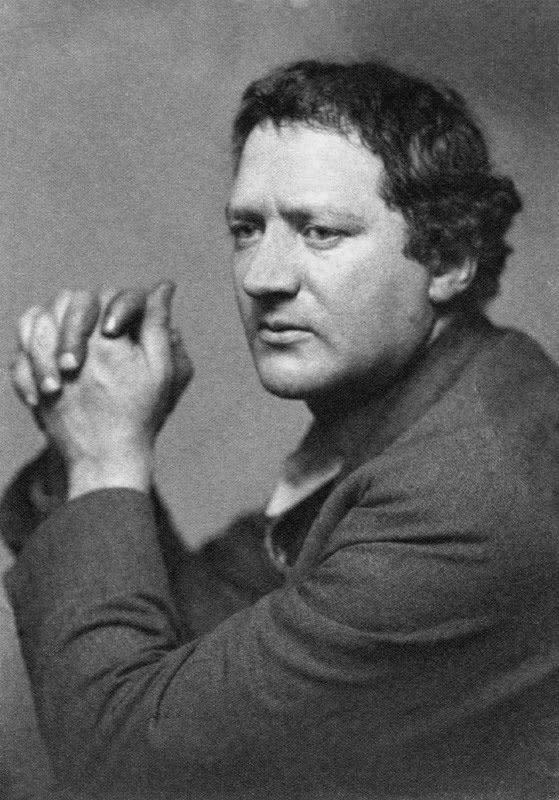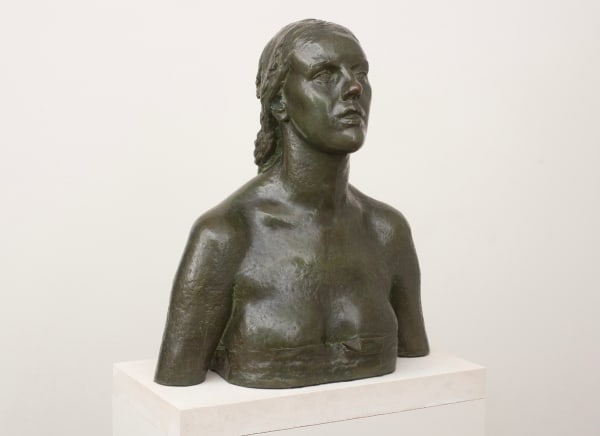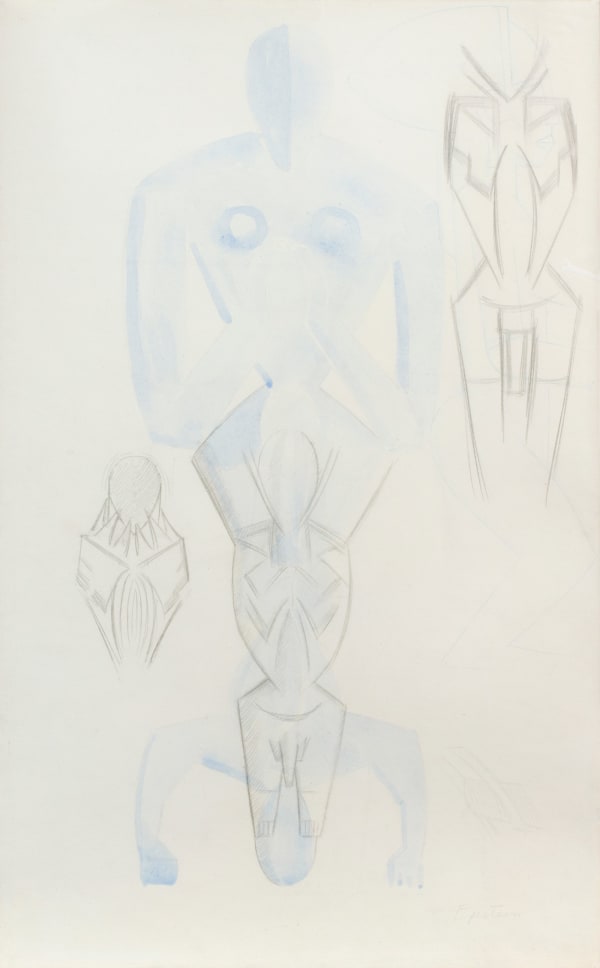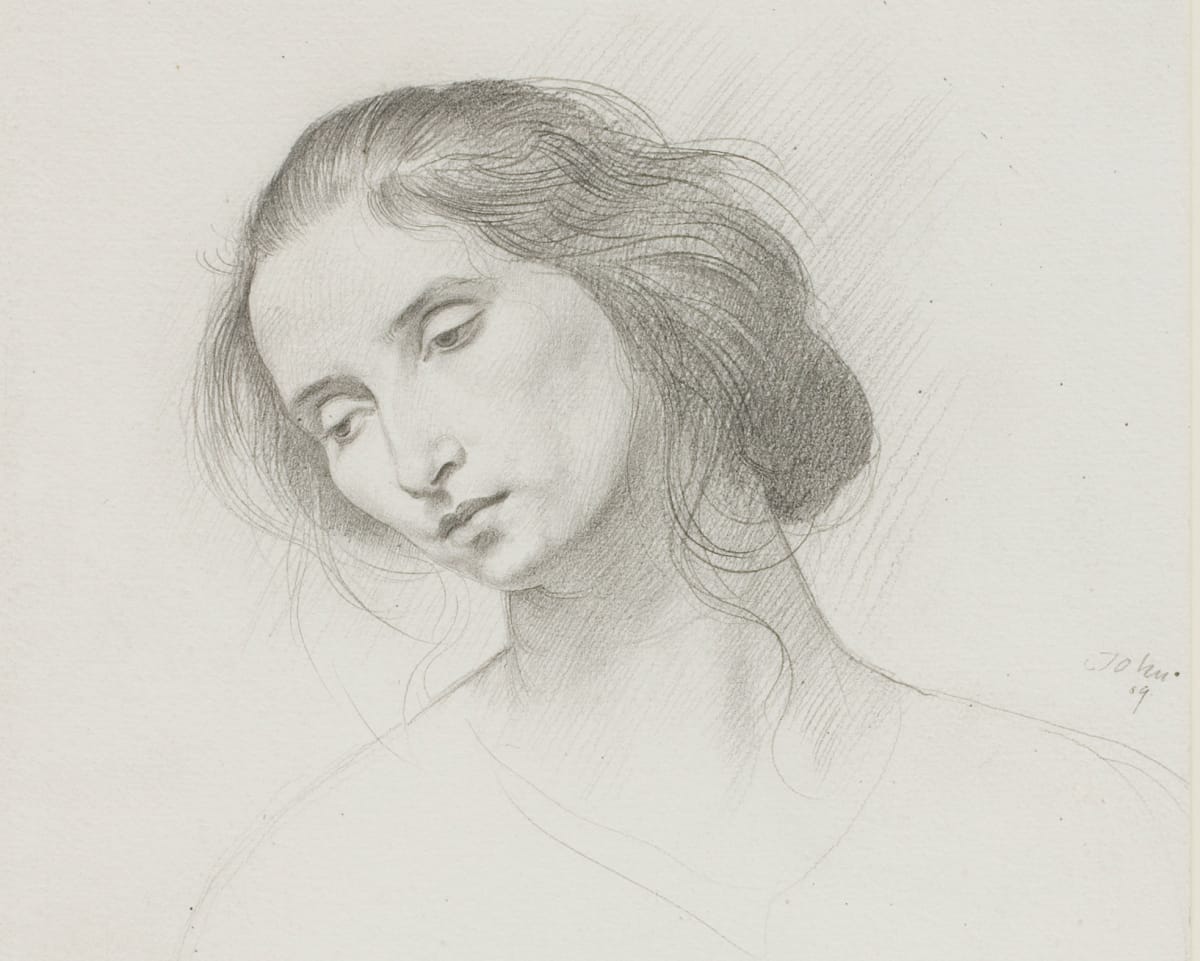Jacob Epstein
The gallery regularly handles, acquires and advises on works by Jacob Epstein. For more information or the availability of work, please contact the gallery.
Jacob Epstein (1880 - 1959)
Jacob Epstein was born in 1880 on the East Side of New York to Polish-Jewish parents. He moved to Paris in 1902, studying at the Ecole des Beaux-Arts and then the Academie Julian, before moving to England in 1905. In both capitals, Epstein associated with the most avant-garde artists of the day, meeting Picasso, Brancusi, and Modigliani in Paris, and in London George Bernard Shaw, Robert Ross – who was instrumental in procuring him the commission for Oscar Wilde’s tomb – James Muirhead Bone, Francis Dodd, Eric Gill, and William Rothenstein. Epstein was a Founder Member of the London Group in 1913 alongside Mark Gertler and David Bomberg, and at the heart of the Vorticist movement with Henry Wyndham Lewis, Bomberg, and Henri Gaudier-Breska, for which Epstein created his monumental Rock Drill sculpture, 1913; Tate. Wyndham Lewis described Jacob Epstein as ‘the only great sculptor at present working in England.’ In 1917 he had his first solo exhibition at the Leicester Galleries, which would represent him throughout his career. Nina Hamnett remembered how ‘Epstein lived in Cheyne Walk and I would stand outside hoping to get a glimpse of him. I saw him through the window one day.’ Such was Epstein’s fame.
Throughout his career, Epstein was a controversial character who faced vitriolic, often anti-semitic criticism particularly for the carvings he created for public commissions. His 18 nude sculptures for the British Medical Association on the Strand were deemed too sexualised, causing outrage, and where for a time covered up. The Hudson Memorial in Hyde Park was daubed with green paint. His religious subjects, including the Madonna and Child, 1927; Riverside Church, New York, Jacob and the Angel, 1940-1; Tate, Genesis, 1929-31; Whitworth Art Gallery, Manchester, and Adam, 1938; Harewood House, provoked particular ire as being created by a Jewish sculptor. From 1912 onwards, Epstein was inundated with portrait commissions, and portrayed distinguished subjects throughout his career including Albert Einstein, Joseph Conrad, Winston Churchill, Ralph Vaughan Williams and Lucian Freud. Epstein was knighted in 1954 and died in London in 1959.
Major retrospectives of his work have been held at the Tate, 1953, Birmingham Museums and Art Gallery, 1980, and a touring exhibition in 1987, which included Leeds City Art Galleries and the Whitechapel Art Gallery. His work is held in major public collections around the world including Tate, National Portrait Gallery, the Metropolitan Museum of Art, MoMA, and the Pompidou Centre.










